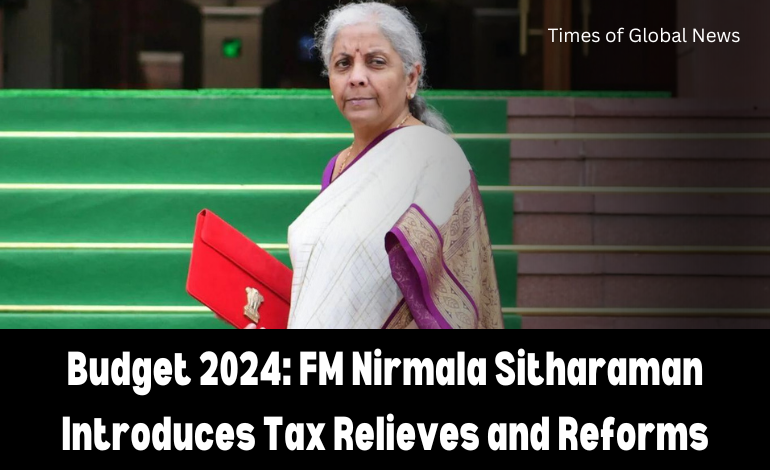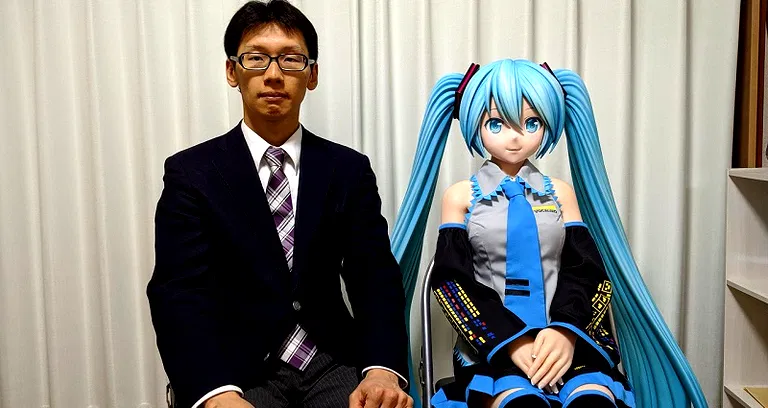
Finance minister Nirmala Sitharaman introduced the union budget guidelines for the fiscal year 2024-25 in the house on July 23. This time the Budget focuses on setting aside provisions for the agriculture sector, introducing new schemes related to employment, loan schemes and introduction to financial support for the MSME sector, infrastructural advancements, and fiscal deficit projection at 4.9% with a promise to reducing it down to 4.5%. Given below you can read all the new budget priorities set by the government for this year:
Budget Guidelines 2024
1. Productivity and resilience in agriculture
A detailed overview of the agriculture research setup will be initiated to bring the focus on increasing productivity and making climate- resilient varieties. Funding will be provided in challenge mode with the private sector. Field expert from both government and private sectors will oversee the conduct of the researches.
New variety release
About 109 new high yielding variety seeds and climate resilient varieties of 32 field and horticulture crops will be made public for irrigation by farmers.
Natural farming
In the upcoming two years, at least 1 Cr farmers will start natural farming that will be supported by certification and branding, implemented by scientific institutions and willing gram panchayats.
Missions for pulses and oilseeds
In order to achieve self-sufficiency, production, storage and marketing will be strengthened.
In order to achieve “atmanirbharat” a new strategy is being developed for oil seeds like groundnut, mustard, sesame ,soybean and sunflower.
Vegetable production and supply chains
large scale blusters of vegetable productions will be made near to major consumption centres.
Farmer- producer organisations, cooperatives and startups for vegetable supply chains including for collection, storage and marketing will be promoted.
The government will join hands with the states in order to facilitate the implementation of the digital public infrastructure (DPI) in agriculture for coverage of farmers and their lands in 3 years.
Before this year end, the digital crop survey for kharif using the DPI will be takes up in the 400 districts. The farmer and land registries will be filled the with the details of 6Cr farmers and their lands, moreover the issuance of Jan Samarth based kisan credit cards will be enabled in 5 states.
Shrimp production and export
Financial support for setting up a network of nucleus breeding centres for shrimp broodstocks, farming, processing and export will be done through NABARD.
National cooperation policy
A new national cooperation policy will be drafted to speed up and track the growth of the rural economy in terms of employment generation opportunities for systematic, orderly and all-round development.
INR 1.52 Lakh Cr is provided for agriculture and other sector. Read this
2. Employment and skilling
According to the prime minister’s package, there are three schemes to be started for ‘employment linked incentive’
Scheme ‘A’: First timers
To pay one- month wage (up to INR 15000) to all people newly joining the workforce in any and all formal sectors, the eligibility limit is set at INR 1 lakh per month.
Scheme ‘B’: Job Creation in Manufacturing
To incentivise additional employment in the manufacturing sector, connected to the employment of the first-time employees.
Scheme ‘C’: support to employers
In order to cover additional employment in all sectors, the government has decided to reimburse employers up to INR 3000 per month for 2 years towards their EPFO contribution for each additional employee.
3. Inclusive human resource development and social justice
All the schemes that support economic activities of artisans, craftsmen, self-help groups, schedules and backward castes will be strengthened.
- Purvodaya: a plan covering the development, infrastructure, and generation of economic opportunities in eastern regions like Bihar, Jharkhand, west Bengal, Odisha and Andra Pradesh will be made.
- Women led development: the budget has allocated more than INR 3 lakh Cr for schemes in Favor of women and girls, in order to promote women- led development.
4. Manufacturing and Services
- Credit guarantee scheme for MSMEs in the manufacturing sector- to facilitate term loans to MSMEs for help in buying machinery and equipment without collateral or third- party guarantee, a credit guarantee will be introduced, which will work on the pooling of credit risks of such MSMEs.
- New assessment model for MSME credit– banks from public sector will work on their in-house capabilities to asses MSMEs for credit, and quit relying on external assessment. They will also take an initiative and work in developing a credit assessment model, based on the scoring of digital footprints of MSMEs in the economy.
- Credit support to MSMEs during stress period- A new strategy for facilitating the continuation of bank credit to MSMEs during their stress period was announced. While being in the special mention account (SMA) stage for reasons beyond their control, MSMEs will have access to credit to continue their business and to avoid getting into the NPA stage.
Many measure to change and build industrial parks, rental housing, shipping industry, national company law tribunals, debt recovery, etc have been taken to promote manufacturing and services industrial parks.
5. Urban Development
- Cities as growth hubs- The government has decided to join hands with the states in order to facilitate the development of cities as growth hubs. This will be achieved through economic and transit planning on top of orderly development of peri-urban areas utilising town planning schemes.
- Creative redevelopment of cities- in order to start creative brownfield redevelopment of existing cities with a transformative impact, the government will plan a framework for enabling policies, market-based mechanisms and regulation.
Transit oriented development- transit oriented development schemes for 14 major big cities with population of over 30 lakhs will be planned on top of implementation and financing strategies. - Urban housing- Under the PM Awas Yojana Urban 2.0, the accommodation needs of 1Cr urban poor and middle-class families will be addressed with an investment of INR 10 Lakh Cr. Which will also have the central assistance of INR 2.2 Lakh Cr in the next 5 years.
- Water supply and sanitation In cooperation with the state government and multilateral development banks, water supply, sewage treatment, and solid waste management projects and services with boosted for 100 big cities through bankable projects.
6. Energy security
- Energy transition – A policy document on appropriate energy transition pathways that balance the imperatives of employment, growth and environmental sustainability will be drafted.
- Pm Surya Ghar Muft Bijli Yojana PM Surya Muft Bijli Yojana has received great responses with more than 1.28 Cr registrations and 14 lakh applicants, the government has decided to promote it even more.
- Pumped Storage Policy A policy for promoting pumped storage projects will be drafted for electricity storage and facilitating smooth integration of the growing share of renewable energy with its variable and intermittent nature in the overall energy mix.
- Research and development of small and modular nuclear reactors nuclear energy is expected to form an important part of the energy mix for Viksit Bharat. The government has decided to join hands with the private sector in order to set up Bharat small reactors, research and development of Bharat small modular reactor and research and development of newer technologies for nuclear purpose.
- Advanced ultra-supercritical thermal power plants- the development of indigenous technologies for advances ultra-supercritical (AUSC) thermal power plants with much higher efficiency has been completed. The partnership between NTPC and BHEL will make a full-scale 800 MW commercial plant using AUSC technology.
- Roadmap for ‘Hard to abate’ industries A plan for moving the ‘hard to abate’ industries from ‘energy efficiency’ targets to ‘emission targets’ will be formulated. Appropriate regulations for the transactions of these industries from the present ‘perform, achieve and trade’ mode to the ‘Indian carbon market’ mode will be put in place.
- Support to traditional micro and small industries An investment-grade energy review of traditional micro and small industries in 60 clusters, including brass and ceramic will be initiated for which monetary support will be provided for shifting them to cleaner forms of energy and implementation of energy efficiency measures. The scheme will be replicated in another 100 clusters in the next phase.
7. Infrastructure
Infrastructure invested by central government- strong monetary support for infrastructure to continue over the next 5 years. This year INR 11.11.111 Cr has been set aside for capital expenditure which is 3.4% of our country’s total GDP.
8. Innovation, research and development
Anusandhan national research fund for basic research and prototype development to be operationalized. Moreover, a mechanism is to be made to encourage private sector-driven research and innovation at a commercial scale with a financing pool of INR 1 Lakh Cr.
Space economy- a capital fund of INR 1,000 Cr will be set up to finally expand the space economy by 5 times in the next decade.
9. Next generation reforms
The government plans to create a new economic policy to boost employment and sustain high growth. This will include various reforms to make markets and sectors more efficient, focusing on land, labor, capital, entrepreneurship, and technology.
Key Reforms and Initiatives:
Land Reforms:
- Rural Areas: Assign unique identification numbers to land parcels, digitize maps, survey land ownership, establish a land registry, and link it to the farmers’ registry to facilitate credit and services.
- Urban Areas: Digitize land records with GIS mapping and set up an IT system for property records and tax administration to improve local urban bodies’ finances.
Labor Reforms:
- Integrate various employment and skill development services through a one-stop solution portal.
- Update Shram Suvidha and Samadhan portals for easier compliance for businesses.
Financial Sector:
- Develop a vision and strategy for the financial sector to meet the economy’s financing needs over the next five years, guiding government, regulators, and financial institutions.
Climate Finance:
- Create a system for climate finance to support climate commitments and green transition.
Variable Capital Company Structure:
- Seek legislative approval for a flexible financing structure for leasing aircraft and ships, and private equity funds.
Foreign Direct Investment and Overseas Investment:
- Simplify rules for foreign investments and promote the use of Indian Rupee for overseas investments.
Technology Adoption:
- Enhance digitalization efforts to boost the economy.
Ease of Doing Business:
- Continue working on the Jan Vishwas Bill 2.0 and incentivize states for implementing business reforms and digitalization.
Data and Statistics:
- Improve data governance and management using technology tools.
Taxation:
Indirect Taxes:
- Customs Duty Review: Simplify and rationalize customs duty rates over the next six months to facilitate trade.
- Sector-Specific Changes:
- Medicines and Medical Equipment: Exempt customs duties on certain cancer medicines and adjust duties on medical equipment parts.
- Mobile Phones: Reduce customs duty on mobile phones and related parts to 15%.
- Critical Minerals: Exempt and reduce customs duties on critical minerals to support strategic sectors.
- Solar Energy: Expand the list of exempted capital goods for solar cell and panel manufacturing, and end exemptions for certain materials.
- Marine Products: Reduce customs duty on specific marine products and inputs for shrimp and fish feed.
- Leather and Textile: Reduce duties on materials for export manufacturing and simplify export duties on raw hides and leather.
- Precious Metals: Reduce customs duties on gold, silver, and platinum.
- Other Metals: Remove customs duties on ferro nickel, blister copper, and maintain concessions on ferrous scrap and nickel cathode.
- Electronics: Remove customs duties on materials for resistor and connector manufacturing.
- Chemicals and Petrochemicals: Increase duties on ammonium nitrate.
- Plastics: Increase duties on PVC flex banners.
- Telecommunication Equipment: Increase duties on specified telecom equipment parts.
- Trade Facilitation: Extend the export period for goods imported for repairs and increase the re-import period for warranty repairs.
Direct Taxes:
- Investment:
- Abolish the angel tax for all investors to support start-ups.
- Introduce a simpler tax regime for foreign cruise companies to boost cruise tourism.
- Apply safe harbour rates for foreign mining companies selling raw diamonds in India.
- Reduce corporate tax rate for foreign companies from 40% to 35% to attract foreign capital.









